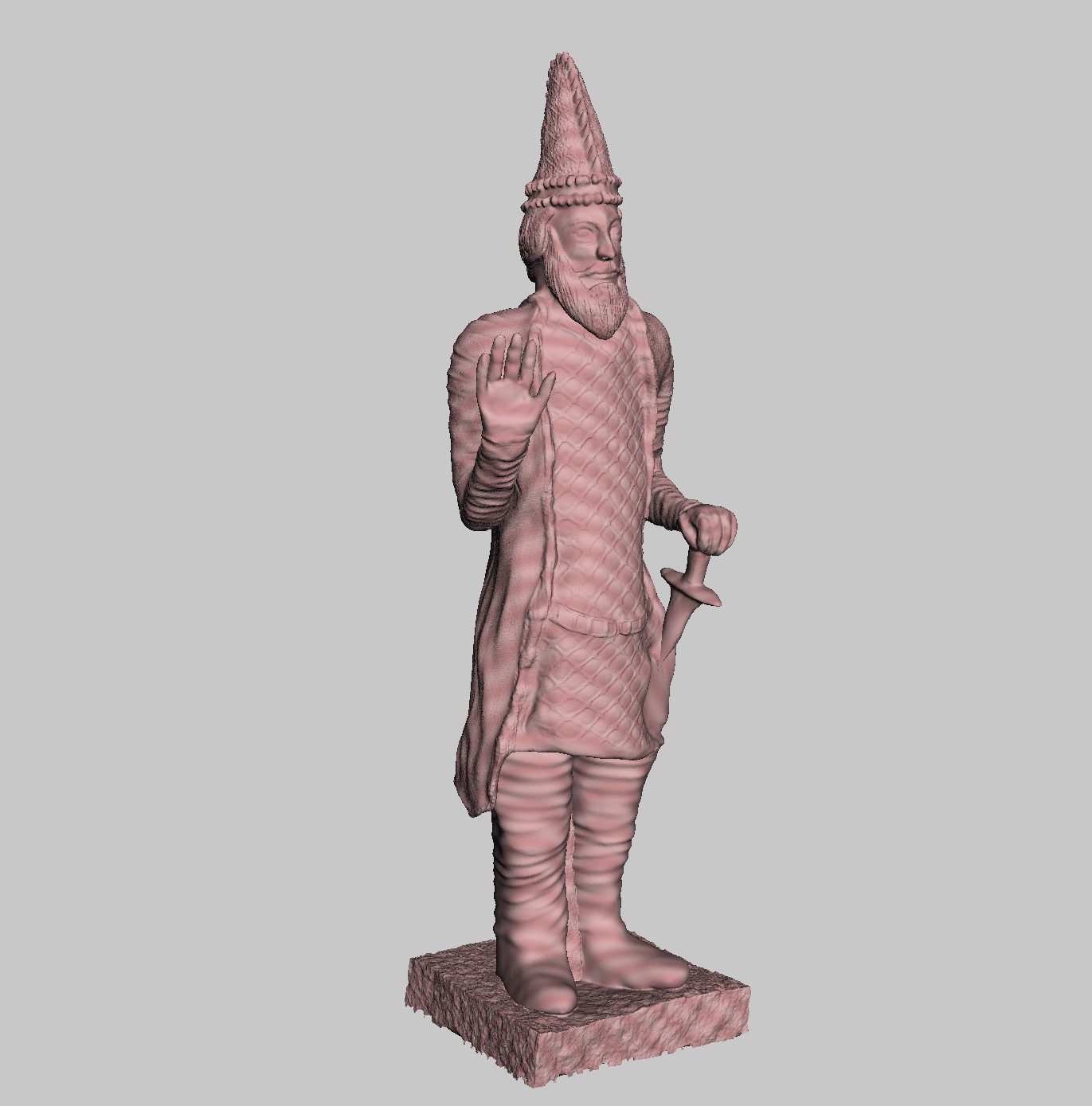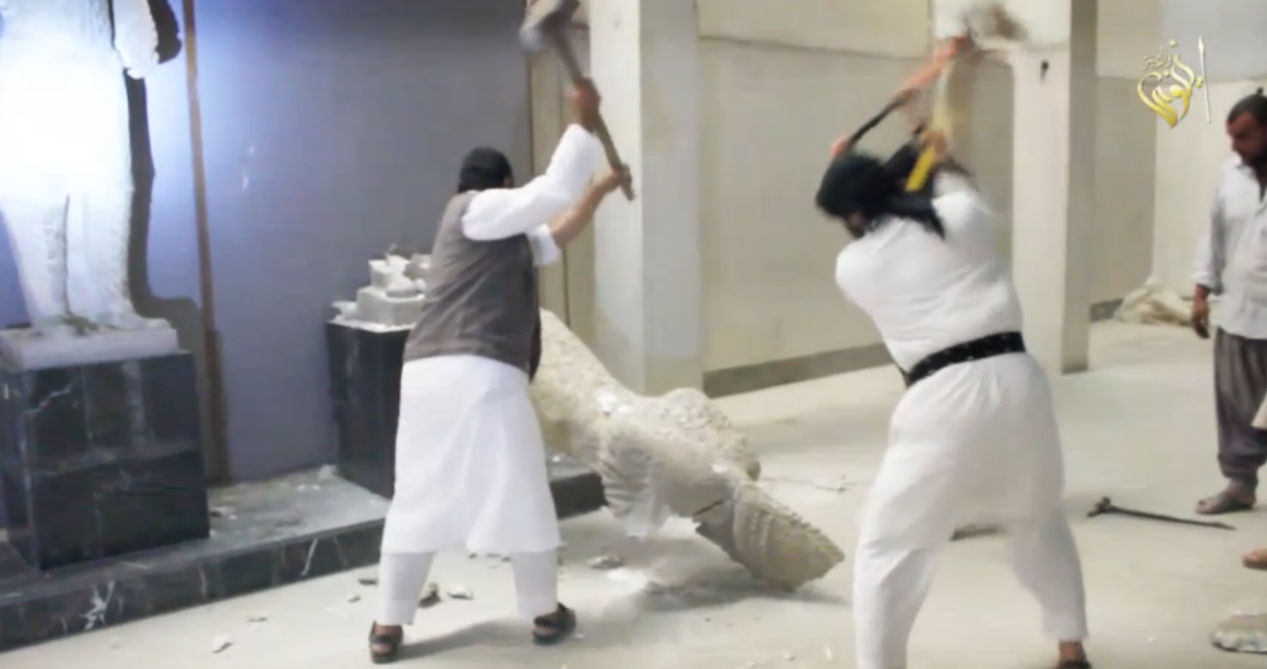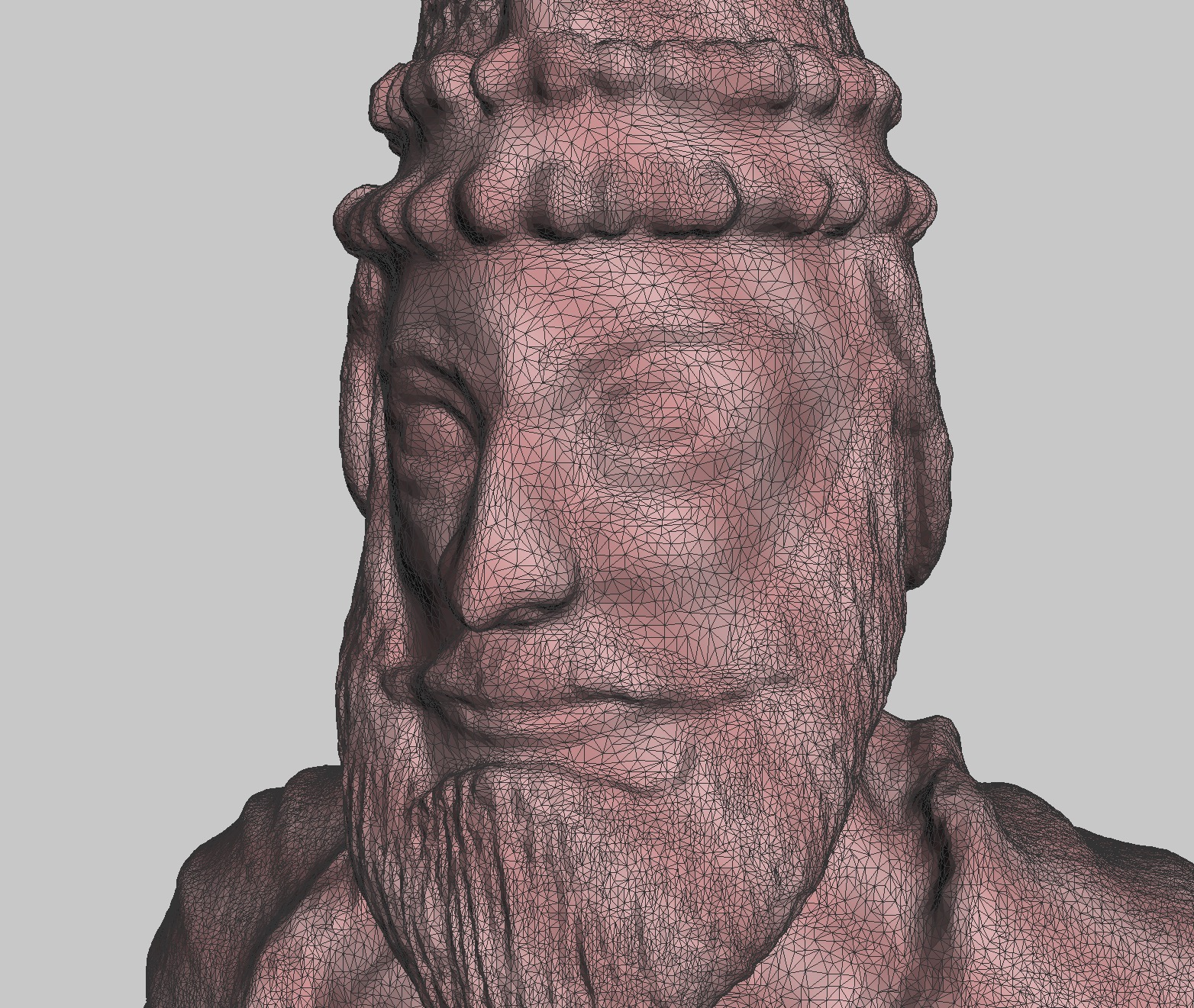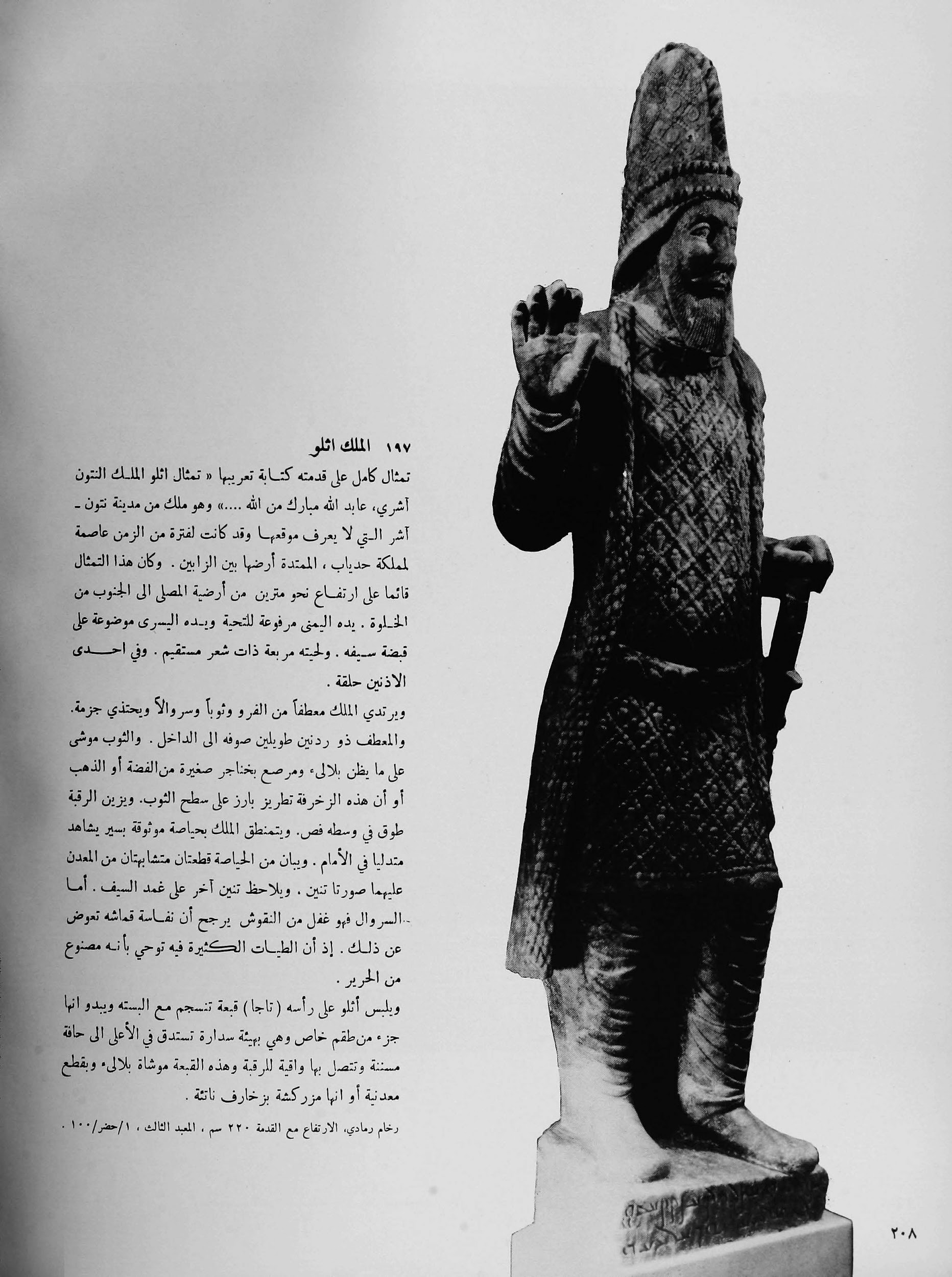A project to digitally recover ancient artifacts destroyed by ISIS fanatics has begun to bear fruit.
The project aims to perform some recovery of material destroyed by ISIS, particularly in their 2014 destruction of artifacts in the Mosul Museum, shown on a video that would make anyone cringe, as priceless statues were smashed to bits.
The recovery project, by artist Morehshin Allahyari, attempts to redevelop usable 3D models of destroyed works through inspection of previously captured still images and a huge amount of 3D modeling labor.
These are not 3D scans; they’re more like very close copies. 3D scans cannot be done after the destruction, and only surviving images were available. Their accuracy may be incomplete, but the artists leverage their abilities to fill in the gaps appropriately when required.
The first result of the project has now been completed and is available for digital download. It’s a Roman-period piece of King Uthal of Hatra, shown above.
A warning: the download file is a spectacular 580Mb, and the 3D model includes almost a million faces, making processing challenging on some computers. I expect to see a few slicing programs blow up on this one. Oh, and make sure you chop the base flat before attempting a print. It’s not level.
Nevertheless, this is an excellent start – and a reminder to museums worldwide that they should strongly consider a 3D scanning program to capture their works in case of disaster.
Should a disaster occur, the works will still exist digitally, and can be reproduced physically if required. And that’s not just for us, in the here and now, it’s for our descendants in the future and forever.
Let’s guarantee those of the future can visit our present.
Via Rhizome





